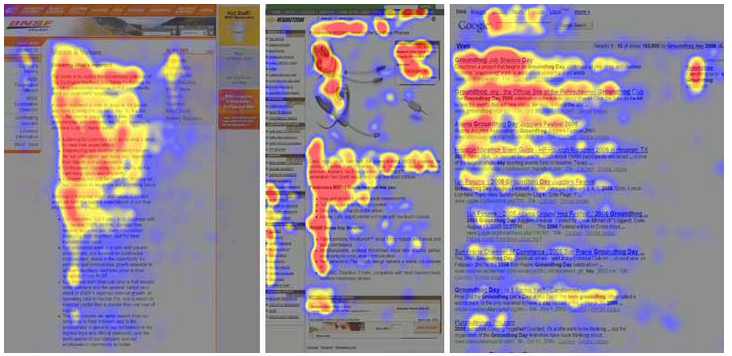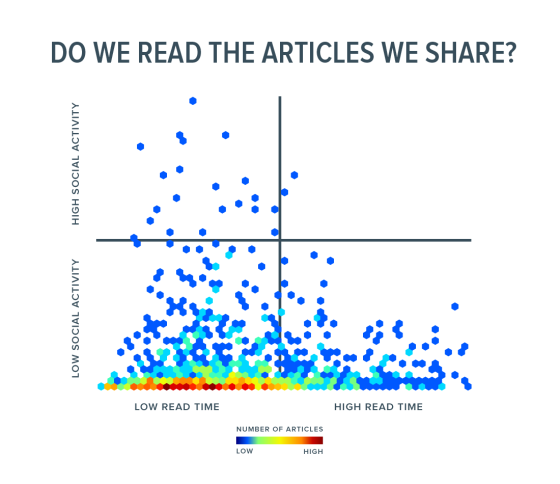13 reading stats that prove that nobody is reading your content (and what you can do about it)
Let’s face it: People don’t usually read online—they skim.
Skimming and scanning occur for a number of reasons (as you’ll see below). As depressing as these stats may be, however, they raise an important point: Digital content, for the most part, is not being optimized for today’s online reader.
As you through these reading stats, try to think less about the time and resources you’ve poured into your blog posts, and more about the patterns and behaviors of your online readership. From there, you can work on structuring your posts in a way that is easier to consume online, and (more importantly) provides value to your reader.
Reading stats: How do people actually read online?
- 55% of all page views get less than 15 seconds of attention. (Chartbeat)
- 60-70% of content churned out by B2B marketing departments today sits unused. (SiriusDecisions)
- In 2008, a study concluded that visitors will only read about 20% of the text on the average page. (Jakob Nielsen)
- 2-3 letter words are skipped over almost 75% of the time, while 8 letter words are almost always fixated upon. (Eyethink)
- The chances of an individual word being fixated on varies according to whether it is a content word (85%) or a function word (35%). Content words include nouns, verbs, adjectives and words that can usually stand alone. Function words create grammatical relationships and don’t mean much on their own. (Eyethink)
- The pattern in which people consume online content isn’t your typical left-to-right reading that you learned in school — rather, it’s an “F” shape that indicates users aren’t reading your content thoroughly. (Jakob Nielsen)

Source: Jakob Nielsen, 2006.
- Web users spend 69% of their time viewing the left half of a page and 30% viewing the right. (Jakob Nielsen)
- Web users spend 80% of their time looking at information above the page fold. Although users will scroll, they allocate only 20% of their attention below the fold. (Jakob Nielsen)
- The average time allocated to an email newsletter after opening is 51 seconds. (Jakob Nielsen)
- Chartbeat looked at 10,000 socially shared articles and found that there was no relationship whatsoever between the amount a piece of content is shared and the amount of attention an average reader will spend on that piece of content. (TIME)

Source: TIME, 2014.
- It takes people approximately 20-30% longer to read online than it takes to read on paper. (ResearchGate)
- In a recent heat map analysis, CoSchedule learned that only 10-20% of readers were actually making it to the bottom of their posts. (CoSchedule)
- Visitors who read an article for three minutes returned twice as often as those who read for one minute. (Chartbeat)
Optimizing for skimmers and scanners
You most likely haven’t made it to the bottom of this post.
If you have, congratulations! You’re an anomaly.
It can be crushing to think that your number of pageviews and social shares might not be as telling as you once thought, and even more stressful to think about the optimization tasks that lay ahead of you.
Here’s how you can start optimizing for skimmers and scanners:
- Re-evaluate where your content lives and start building a better content experience.
- Increase your content’s discoverability to help your readers find exactly what they’re looking for.
- Avoid the crowds by going more niche within your niche to make your content the most valuable it can possibly be.
- Take the time to edit for structure, as well as for content and spelling/grammar.
- Really evaluate quality vs. quantity in your content strategy to improve your content team’s productivity—stop wasting time and resources writing posts just to keep your blog topped-up. If a post isn’t going to move the meter, it might not be worth it.
Welcome to the attention web
These stats don’t necessarily mean that nobody’s reading your content (hey, I had to get your attention somehow).
However, they do point to an important trend that content marketers need to acknowledge: Your readers—what your content strategy depends upon—are consistently being thrown into poor content experiences that are not helping them.
If you want to claim a stake in today’s Attention Web, it’s time to start paying attention to your own content experience.
